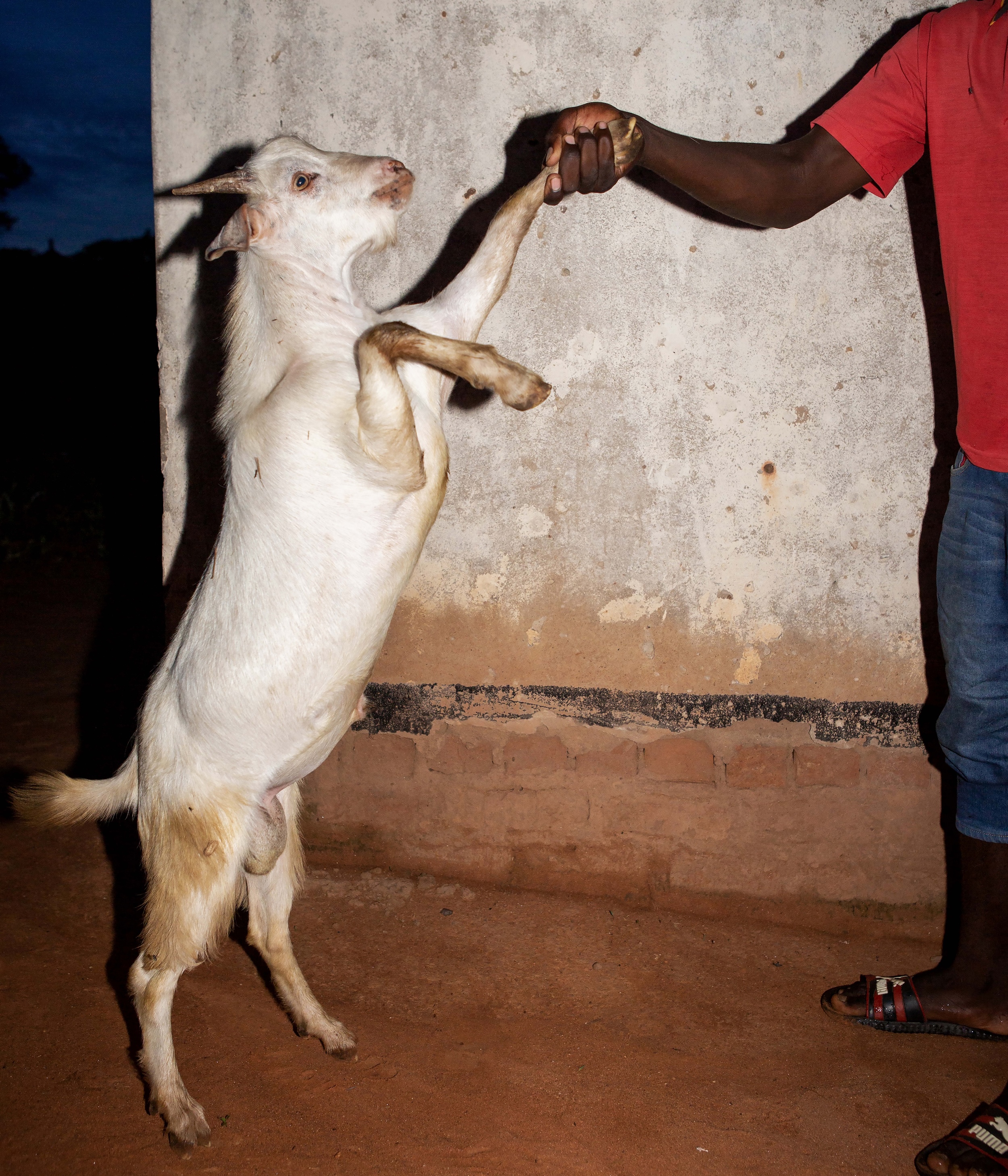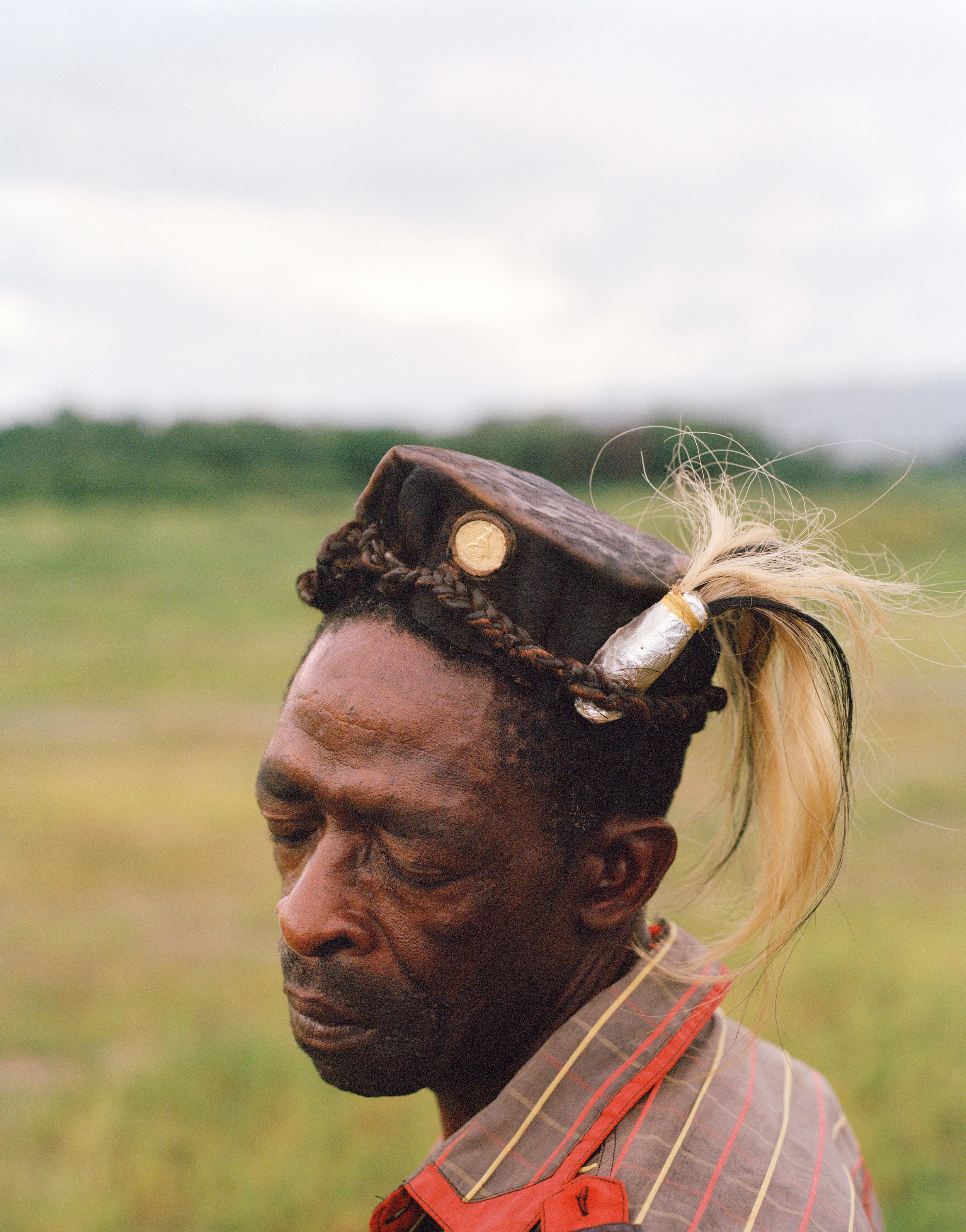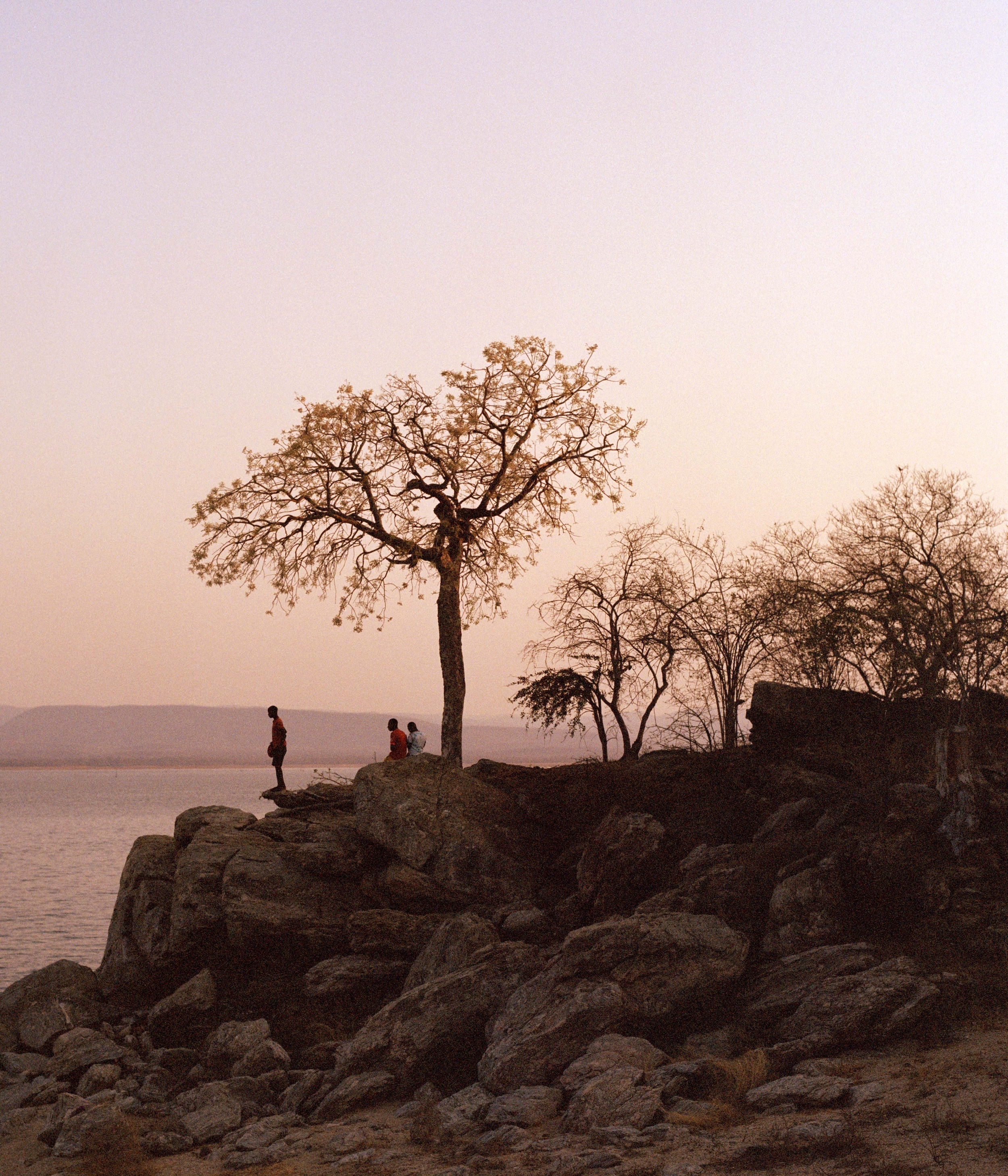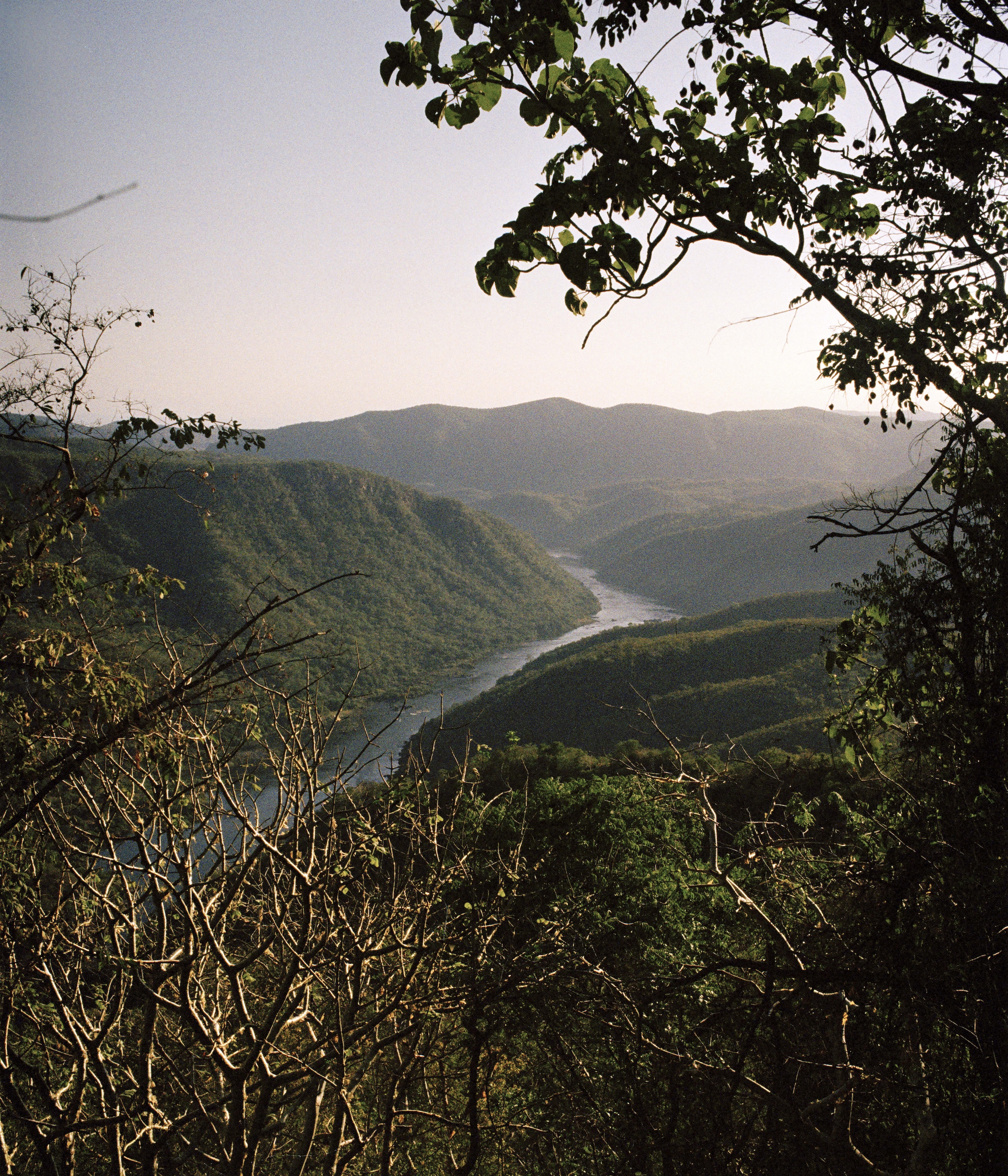© Jono Terry
The Zimbabwean-born, London-based artist problematises his memories of childhood, speaking through his self-published book, They Still Owe Him a Boat
Early evenings on Lake Kariba hold a special place in Jono Terry’s childhood memories: the 40-degree Zimbabwean heat would finally break, and after a day trying to catch fish, “all of these colours would fade into one another on this beautiful expansive lake as day starts turning into night,” he says. “There’s this feeling of peace and tranquility.” For many white Rhodesians, like Terry, summer holidays would be full of adventures, laughter and first kisses on the lake’s banks. But for the indigenous population, who were displaced when the Zambezi river was flooded to create the world’s largest artificial lake and reservoir in 1960, Lake Kariba represents something completely different. Lake Kariba
“Every time I go back to Zimbabwe there’s so many manifestations of these big colonial hangovers that still exist in contemporary African society,” says Terry. In many ways, he sees Lake Kariba as a symbol of that “colonial legacy, of broken promises, of displacements, belonging, human rights, environmental destruction, the list goes on and on.” The British South Africa Company colonised Zimbabwe in 1891, calling the area Rhodesia after the company’s founder, Cecil Rhodes. Backed by the British army, they dispossessed millions of Africans and created a system of white minority rule that endured for 90 years with the 1930 Land Apportionment Act even restricting black land ownership in areas of the country.
Terry has spent the past six and a half years returning to his favourite place in the world as a documentary photographer rather than a tourist, processing how all the things that he had enjoyed about the lake growing up, “conversely meant that other people hadn’t or had lost livelihoods and ways of life.” His new book, They Still Owe Him a Boat, captures the beauty of the man-made lake, the white people that visit it, as well as the families of the 57,000 Tonga people, who had once prospered from the fertile farmlands on the banks of the river before they were evicted. He speaks to the tribe’s elders, including a 90-year-old man, who remembers an idyllic life along the Zambezi River, and told him about the myths and folklore of the valley: “the social and cultural history, which tends to get whitewashed in the colonial advancement modernisation narrative of things.”


In sunkissed portraits against the pastel tones of the buildings, the red earth and purple skies, Terry finds the “beautiful whilst referring to really some of these big potentially problematic themes.” Photographed sitting in a striped top he captures the elderly man, who shared so much about the place he once lived. “He is obviously the physical photographic representation of all of these people who would have had this attachment to the land that are now forced to live away from a place they love and cherish.” In the book he attributes a quote to him: “if I could return to the river, I would have already started running.”
In images, the photographer draws on his stories: a beautiful white goat recalls the story of the one slaughtered to appease Nyaminyami, the serpent-like river god, who villagers called on for protection after their displacement in 1958 following the construction of the Kariba Dam on the Zambezi River. The anger of the river god is said to have caused devastating floods during the dam’s construction as the rock by the entrance to the gorge close to the dam wall site, which was regarded as the home of Nyaminyami, would be buried more than a hundred feet below the water surface. Terry went to the area it was believed to have been sacrificed and stayed with the descendants of the tribe that had carried out this act.
When the Lake Kariba dam wall was opened by the Queen Mother on 17th May 1960, along the border between Zambia and Zimbabwe, it was declared an engineering feat: “the white man in Africa conquering the wild Zambezi river,” says Terry. It was supposed to produce the cheapest electricity in the world. But it destroyed more habitat than any engineering project before it. Gone was the life of abundance people described before, where the rich river soil meant most things would grow, and instead was a hard life. The resettled populations had been relocated to areas where the soil is really arid.” They work really hard, they survive off the land, but very meagrely,” says Terry.


The communities who were displaced were promised to be taken care of but as the title of his book alludes to, there was this “sort of grand colonial deception,” he says. “I was meeting with resettled tribes who still 60 years after the construction of this lake don’t have running water, don’t have electricity. The dam was built for hydroelectric power but some of these tribes who live less than 20 to 40 kilometers away from the lake shore still have no electricity,” Terry says. They were promised the ability to go back to fishing, hunting and farming; and told they would be given an allowance and have houses built for them but “there’s a continued lack of acknowledgments of the resettlement terms, things that were promised to these people that were never delivered.”
It’s not always the struggles that Terry captures but he does show life on the lake as it is now: villagers drying maramba fish under electric blue fishing nets; a moth lit up against the sun glistening in the Chibwatata Hot Springs; Charara Point where young boys dive into the lake; the homes of his fixers and friends where photographs crowd the walls; and the silhouette of Zimbabwe’s white cowboys against a barely lit sky with the crescent of the moon overhead. In one beautiful image, the shadow of leaves veils a man’s head. Solomon and Terry formed a dee friendship after he picked him up as a hitchhiker going into town. “He sort of became like my confidant, my fixer, Solomon just knew everyone,” he says. “He’s this big, loud, bubbly, friendly guy that everyone kind of knew and loved.”
These contacts, connections and stories really only happen when you give a project time, says Terry. But it was his personal connection to the land that gives the work its beauty and depth. “My dad wanted to have his ashes scattered at Lake Kariba so that was the beginning of the seed that started the story because when I found that out there were a few more questions in terms of returning to the land, belonging to a place, and I guess specifically in terms of white Zimbabweans, I get the idea of returning to a land that we are originally not from. That struck me as quite powerful, but also problematic and quite complicated.”



